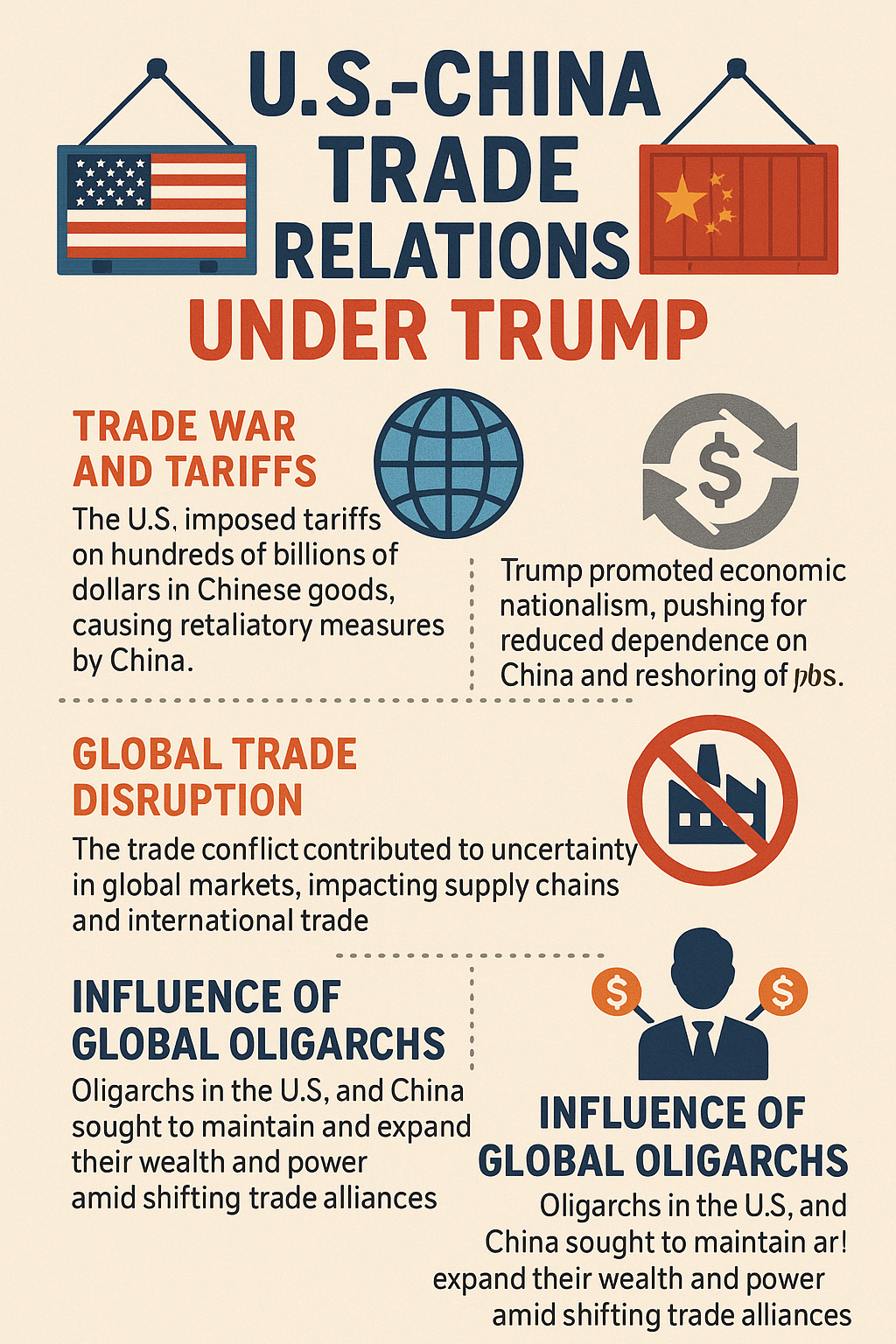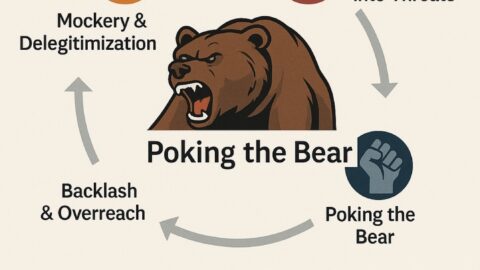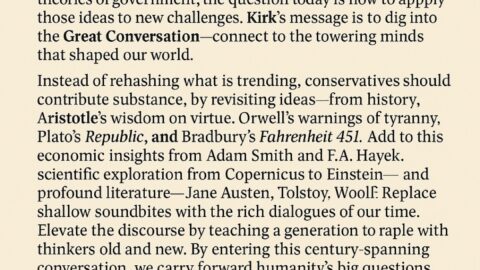Introduction: The Surface Story
When Donald Trump launched his trade war with China in 2018, it was sold to Americans as a populist defense of the nation’s manufacturing base, middle-class jobs, and economic sovereignty. Tariffs were introduced with the promise of bringing factories back to the U.S., reducing the trade deficit, and punishing China for its intellectual property theft.
The surface-level narrative presented Trump as a bold nationalist leader taking on China and globalization. Many Americans, frustrated by decades of job outsourcing and wage stagnation, rallied behind him. In this view, Trump’s tariffs symbolized the long-awaited pushback against corporate betrayal and global exploitation.
But when you step back and look behind the curtain, a different pattern emerges—one that suggests the global oligarchs may have been benefiting from, and even coordinating, the deeper consequences of this so-called “war.”
The Deeper Reality: Cui Bono? (Who Benefits?)
The American People vs. the Global Financial Elite
While tariffs made headlines, the real beneficiaries were multinational corporations and financial institutions, not American workers:
- Corporate restructuring continued unabated during the trade war. Many companies simply shifted supply chains from China to other low-wage countries (like Vietnam, Mexico, and Malaysia)—not back to America.
- Stock buybacks exploded. Corporations used the cover of “economic uncertainty” to hoard cash and boost stock prices, enriching Wall Street at the expense of wage increases and domestic reinvestment.
- Consumer prices rose in industries like agriculture, manufacturing, and retail. Tariffs, being taxes on imports, were passed onto American consumers and small businesses, not absorbed by China.
The trade war appeared populist, but its practical effect was to further consolidate wealth into fewer hands.
China’s Strengthening, Not Weakening
Another unintended (or possibly intended) consequence was that China adapted and accelerated its internal economic strategies:
- Belt and Road Initiative (BRI): China deepened its global influence through the BRI, securing infrastructure deals across Africa, Asia, and Europe while the U.S. retreated into isolationism.
- Technological Independence: Facing tariffs, China invested massively in domestic high-tech development (AI, 5G, semiconductors), reducing reliance on American firms.
- Global Currency Play: China quietly built alternatives to the U.S.-dominated SWIFT system and the dollar-based trade networks, a crucial step toward global de-dollarization.
- Strengthening Ties with Other Nations: While Trump alienated allies through aggressive tariffs (even on Europe and Canada), China signed major trade agreements like the Regional Comprehensive Economic Partnership (RCEP), creating the world’s largest trade bloc.
Thus, rather than crippling China, the trade war forced them to diversify and become more resilient, ironically helping them ascend faster toward global leadership.
Global Oligarch Strategy: Hegelian Dialectic at Play
This fits a pattern often seen with global oligarchs:
Problem → Reaction → Solution
- Problem: China’s rise threatens U.S. dominance.
- Reaction: Americans grow angry at outsourcing, economic stagnation, and China’s trade abuses.
- Solution: Launch a “trade war” to pacify the domestic base, while behind the scenes, multinational corporations reposition global supply chains and financial empires into a new world order centered around an empowered China.
Thus, the trade war served as a “pressure valve” to let Americans believe they were “fighting back,” while global power structures were being quietly reconfigured for the next phase of globalization—with China, not America, at the center.
The Psychological and Cultural Manipulation
The trade war fed into the emotional centers of populist anger:
- National pride
- Economic grievance
- Fear of foreign enemies
- Hope for restoration of lost prosperity
These emotions were weaponized, keeping the American public distracted from the real systemic shifts:
- Rise of surveillance capitalism
- Growth of global AI-powered governance
- Merging of Western corporate power with Eastern manufacturing dominance
In essence, Americans were emotionally pacified while being systematically dispossessed.
Parallels to the British-to-American Shift (18th–19th Century)
This is not the first time such a major shift has happened:
- During the 19th century, the British Empire deliberately began transferring financial and geopolitical dominance to the United States.
- London financiers invested heavily in American infrastructure, railroads, oil (think Rothschilds backing Rockefeller), and banking systems.
- Britain maintained influence through financial control even as it appeared to “decline.”
Similarly, today’s “decline of America” appears less like a spontaneous event and more like a managed demolition—coordinated by the same supranational financial elites who engineered past empire transitions.
Conclusion: Trade War as a Trojan Horse
In truth, Trump’s trade war may have functioned like a Trojan Horse:
- Outwardly patriotic and populist,
- Inwardly facilitating the long-term transfer of economic hegemony from America to China,
- All while consolidating more power, wealth, and surveillance capabilities in the hands of a few global elites.
The American middle class, deceived by “America First” rhetoric, became the ultimate collateral damage.
Key Takeaways:
- The trade war was largely performative, not structural.
- China was strengthened, not weakened.
- Multinational corporations profited by adapting globally.
- The American working and middle classes paid the price.
- The global elite continue orchestrating empire transitions behind a veil of nationalism and populism.







